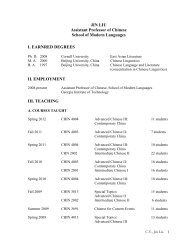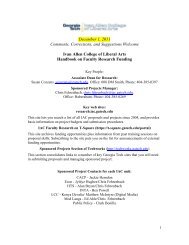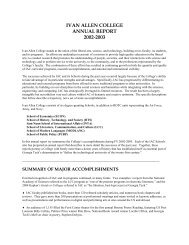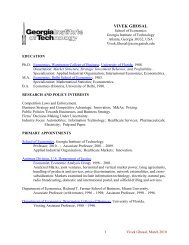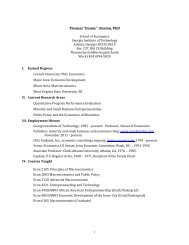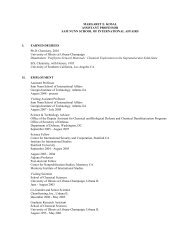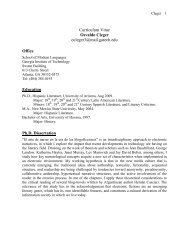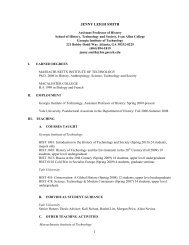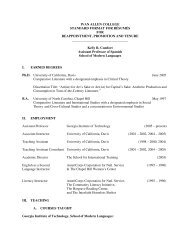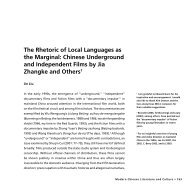Atlanta Housing - Georgia Institute of Technology
Atlanta Housing - Georgia Institute of Technology
Atlanta Housing - Georgia Institute of Technology
You also want an ePaper? Increase the reach of your titles
YUMPU automatically turns print PDFs into web optimized ePapers that Google loves.
d. Create new housing developments and subsidize housing opportunities<br />
through public/private partnerships using mixed funding sources and market<br />
rate principles.<br />
e. Assist residents in attaining their life goals and in achieving self-sufficiency and<br />
educational advancement.<br />
The report also provides answers to the following questions: When public housing projects<br />
were demolished, did families relocate to better neighborhoods? Did mandatory work<br />
compliance policies increase employment, household income and other indicators <strong>of</strong><br />
household mobility? Did access to better housing options in higher quality neighborhoods<br />
improve upward mobility? Finally, did the demolition <strong>of</strong> Grady and other public housing<br />
developments increase the risk to families <strong>of</strong> losing housing assistance?<br />
Grady Revitalization as part <strong>of</strong> AHA’s MTW Program<br />
Grady revitalization was not an isolated event. Instead it was part <strong>of</strong> an all-encompassing<br />
strategy AHA refers to as The CATALYST Plan, or more simply CATALYST. It is the blueprint for<br />
AHA’s Moving to Work (MTW) Demonstration Program.<br />
Congress enacted the MTW program in 1996 and HUD implemented the program in 1999.<br />
Today, only 33 <strong>of</strong> the nation's 3,300 <strong>Housing</strong> Authorities have been selected to participate in<br />
the MTW program. The 33 PHAs however managed over 11% and 13% <strong>of</strong> all public housing<br />
units and housing vouchers respectively. Together they account for $2.7 billion in voucher<br />
funding, $730 million in public housing operating fund and $180 million in capital funds 1 . MTW<br />
status gives public housing authorities exemptions and waivers that allow them to the flexibility<br />
to use their funding to design and test innovative approaches to delivering housing assistance<br />
to low-income families; approaches that are tied more closely to local conditions and<br />
circumstances. A caveat <strong>of</strong> MTW selection is that housing authorities must provide, "assistance<br />
to substantially the same total number <strong>of</strong> eligible low-income families as would have been<br />
served had the funding amounts not been combined.” 2<br />
1 Emily Cadik and A. Nogic, Report to Congress. Moving to Work: Interim Policy Applications and the<br />
Future <strong>of</strong> the Demonstration (HUD, Office <strong>of</strong> Policy Research and Development: August 2010). 3<br />
2 US HUD, Moving to Work (MTW) FAQ<br />
http://portal.hud.gov/hudportal/HUD?src=/program_<strong>of</strong>fices/public_indian_housing/programs/ph/mtw/faq<br />
16 | P a g e



